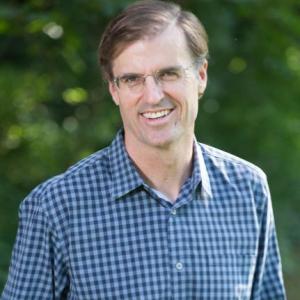Q&A with Jamie Williams
You asked, he answered! Here are responses to some of our Insight Panel’s most frequently asked questions from Wilderness Society President Jamie Williams.

Q: What is the biggest obstacle you face in your efforts to protect the wilderness: big business, politics, ignorance, something else?
If I were to pick one thing, I’d have to say it is that so many people are unaware of the potential of public lands to help us tackle big problems, such as climate change, and so they feel powerless, like the problems are just too big. They’re not aware that this incredible natural heritage, nearly a third of the country’s land, is held in trust for everyone. The decisions for what to do with these lands have usually been made by a small group interested in profit rather than the public good. That’s how we’ve wound up with nearly a quarter of our national greenhouse gas emissions coming from fossil fuel development on public lands. Phasing out of new oil and gas development on public lands coupled with conserving our incredible carbon storing forests would make a huge contribution to stemming the climate crisis. So we’re putting the public in the driver’s seat for decisions on public lands, and helping people discover their power to make good things happen for everyone.
Q: How do you, as an organization, decide which wild lands to focus on protecting/restoring?
First, we rely on science to identify the lands that are the most important to protect or restore because of their ecological values, such as biodiversity, rare ecosystems, or location along a corridor we can expect to be needed by plants and animals migrating to adapt to climate change and habitat loss.
We also work in many areas where we have a long record of working locally to conserve big landscapes, having built strong relationships and a reputation for integrity and collaboration. We’re not dropping into the communities near public lands to tell folks what to do. Our staff members live in these communities and have for many years. They know the people, they understand the issues that people are grappling with, they listen more than they talk, and they have earned the respect of people who don’t necessarily agree with them, and work on our common ground.
We are also intentional about choosing to work in places that collectively reflect the full diversity of our country, so that we are supporting all people in conserving and connecting to natural areas core to their health and well-being. In areas where we haven’t been living and working for a long time, we go where there are strong, dedicated community organizations working together to protect special lands, or to improve access to nature for people who don’t have a car, or to get funding for new parks directed to the areas that need them the most. Then we listen and learn and find out if our help is wanted and if our skills and knowledge in how to get new policies enacted or new funding authorized, can help them achieve their goals. We’re excited to find community led coalitions where the addition of our particular expertise can help win big victories.
Q: There is so much bad news. How do you stay optimistic about the future of America’s wilderness areas and conservation in general?
First, I am inspired every day by working with incredibly dedicated and talented people, on our staff, among our partners, supporters, and leaders from the local to national levels.
I’m also excited by the opportunities we have with the Biden administration to gain major policy wins to protect tens of millions of acres of public lands, such as conserving old growth and mature trees in the national forests.
And though it doesn’t make the news, we’re seeing a more powerful conservation movement emerging, one that gives everyone a seat at the table. I get to see it because we’re working in communities across the country, in urban as well as rural areas. We’re adding our deep knowledge of public lands—the ecological science, policy and the law—to community led efforts that are bringing people together across their differences and developing plans for how to both protect nature and strengthen the local economy. This community-based work is really inspiring.
